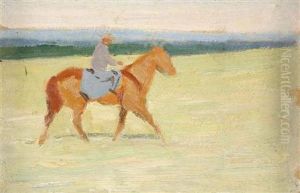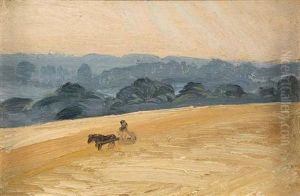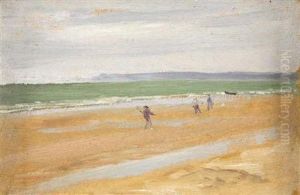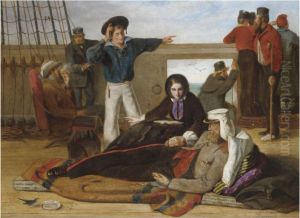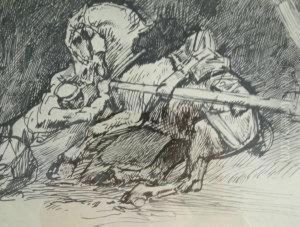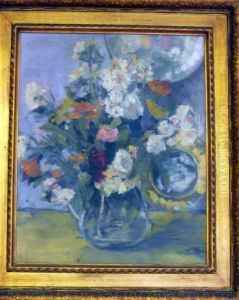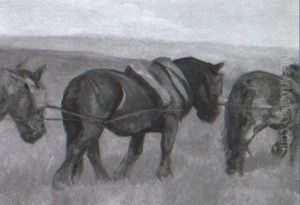Lowes Dalbiac Luard Paintings
Lowes Dalbiac Luard was an English painter, known for his watercolor landscapes and figure scenes. Born in 1862, Luard developed a passion for art at a young age, influenced by the picturesque landscapes of England and the burgeoning art scene of the late 19th century. Despite the Victorian era's constraints and the challenges faced by artists to gain recognition, Luard carved out a niche for himself in the art world with his distinctive style and dedication to his craft.
Luard's career spanned a period of great change in the art world, from the late Victorian period through the Edwardian era and into the early 20th century. His works often reflected a fascination with the natural world, capturing the changing seasons, the play of light on water, and the tranquil beauty of rural England. He was particularly adept at using watercolors, a medium that allowed him to experiment with light and color in a way that brought his landscapes to life. Luard's figure scenes, though less well-known, also demonstrated his keen eye for detail and his ability to capture the essence of human emotion and daily life.
Throughout his career, Luard exhibited his work at various prestigious venues, including the Royal Academy and the Royal Watercolour Society. His contributions to British art were recognized by his contemporaries, and he gained a modest following among art collectors and enthusiasts. Despite this, Luard never achieved the level of fame or commercial success enjoyed by some of his peers. He continued to paint throughout his life, remaining true to his artistic vision and the mediums he loved.
Luard's legacy is that of a dedicated artist who captured the serene and pastoral beauty of England. After his death in 1944, his works continued to be appreciated by those who value the subtlety and emotional depth of watercolor painting. Though not a household name, Lowes Dalbiac Luard's contributions to English art offer a window into the landscape and sentiment of his time, preserving the beauty of the natural world for future generations to appreciate.
